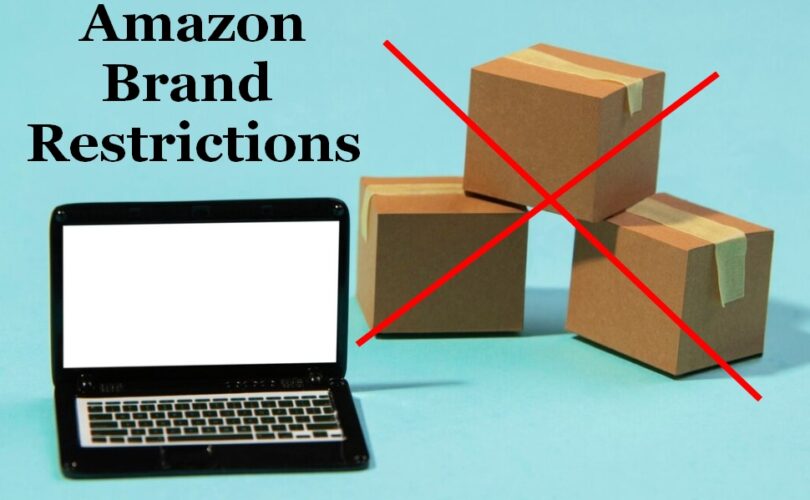In the dynamic world of online retail, understanding and adhering to brand restrictions (BR) on Amazon is crucial for sellers. Keeping abreast of the latest updates and using tools to navigate these restrictions can be the difference between a thriving online business and one fraught with challenges.
This article will delve into the complexities of BR on Amazon, examining common reasons behind them and offering guidance on how sellers can effectively manage their product listings to remain compliant.
Understanding Amazon’s BR
Discovering the latest list of restricted brands on Amazon is key to navigating the platform successfully. The Selling Family has maintained an up-to-date record of such brands since 2016, ensuring that sellers have access to reliable and current information.
October 2023 Update on Restricted Brands
The list is regularly updated, providing sellers with a comprehensive overview of brands like Puma, Gucci, Adidas, Nike, and so on that are generally off-limits or not recommended for selling.
Brands might be listed due to exclusive rights held by the brand owners or a history of intellectual property (IP) complaints against sellers.
Reasons Behind BR
There are various factors why a brand might be included on the restricted list:
- Total Restriction for Third-Party Sellers: Certain brands are completely off-limits to all third-party sellers, reserved exclusively for the brand owner or Amazon itself. Attempting to list these products will result in a direct notification of restriction without an approval request option;
- Conditional Approval Requirements: Some brands may appear restricted but offer an approval request path. Approval might depend on providing valid invoices from an authorized wholesaler or could be based on the seller’s performance history;
- Brands Prone to IP Complaints: A crucial consideration is brands known for filing IP complaints against sellers. While these brands might not be technically restricted, listing their products is risky due to potential legal issues.
Proactive Measures Against IP Complaints
- Avoiding brands known for IP complaints is crucial for maintaining a healthy seller account;
- Utilizing tools like the IP Alert extension can help sellers identify risky brands before purchasing or listing products.
BR Checks During Product Sourcing
Ensuring compliance while sourcing products is integral for avoiding complications:
- In-Store Verification: The Amazon Seller App is a valuable asset for checking brand or category restrictions on the go. The app allows for immediate approval requests, helping make informed purchasing decisions;
- Online Sourcing Tools: For online product sourcing, tools like the Chrome extension RevSeller come in handy. RevSeller provides a return on investment (ROI) calculator and indicates approval status for products, alerting sellers to potential restrictions.
Mastering the Terrain of Restricted Brands on Amazon
For business owners and entrepreneurs targeting success on Amazon’s platform, grasping the intricacies of restricted brand policies is essential. These policies play a key role in Amazon’s efforts to preserve the quality and authenticity of products available in their marketplace.
Keeping Up with Amazon’s Dynamic List of Restricted Brands
Regularly updating oneself on the evolving list of brands subject to restrictions on Amazon is vital for any seller’s success. Industry experts continuously refine this list, offering crucial information about brands that are either restricted or not recommended for sale.
It’s important to recognize that not all brands on this list are explicitly restricted. Some may be included due to exclusive distribution agreements or a history of intellectual property disputes with sellers.
Deciphering the Rationale Behind BR
Understanding why certain brands are restricted on Amazon can significantly guide a seller’s strategy:
- Exclusive Restrictions: Certain brands are limited to being sold solely by the brand owner or Amazon, precluding third-party sellers from listing them;
- Conditional Restrictions: Some brands show as restricted, but sellers have the opportunity to seek approval, often needing to present authentic purchase invoices;
- Intellectual Property Concerns: There are brands that, while listable, are known for initiating intellectual property complaints, presenting a risk for sellers’ accounts.
Efficiently Monitoring and Responding to BR
- Sellers must confirm their eligibility to sell specific brands before acquiring stock. Applications such as the Amazon Seller App and various browser extensions can aid in real-time verification of brand and category restrictions;
- Extensions like IP Alert are invaluable for proactively identifying brands with a propensity for filing intellectual property complaints, thus mitigating risks to seller accounts.
Tactics for Gaining Approval to Sell Restricted Brands
The Selling Family suggests multiple approaches to secure permissions for selling restricted brands:
- Direct Brand Approval: Securing formal authorization from the brand itself can be particularly effective, especially in wholesale business models;
- Wholesale Invoices: Demonstrating purchases from recognized wholesalers can facilitate Amazon’s approval;
- Performance-Based Approval: Amazon may automatically authorize sellers to list certain brands based on their past performance and account standing.
Amazon’s strategy in restricting certain brands is primarily to safeguard against counterfeit products, theft, and potential dilution of brand value. It also aims to honor exclusivity agreements and warranty terms, applicable only through purchases from certified sellers.
Conclusion
Navigating Amazon’s complex framework of BR is a critical element for sellers on the platform. Staying informed, leveraging appropriate tools, and understanding the avenues to secure approvals are fundamental in effectively dealing with these restrictions. This not only aligns with Amazon’s regulatory framework but also plays a significant role in upholding the integrity and trustworthiness of the marketplace.






